-

Antique Hatchet Restoration
When I have time, I enjoy restoring old tools back to a more useful and beautiful state. The most fuel, energy, and time intensive part of making an axe from scratch is punching or forge welding to form the eye. When quality antique axe and hatchet heads can be found in scrap piles or at…
-

Sounds of the Workshop: Aikuchi Tanto Urushi Lacquer
…a.k.a.: the *even* quieter edition. The final stages of finishing the aikuchi tanto. This is a collection of clips documenting the steps and sounds involved at most every stage of the process of hand lacquering a traditional aikuchi tanto mount made from reclaimed driftwood. Several of the layers have been omitted from the video when…
-

Kuromon Aikuchi Tanto
Kuromon can be translated as “the black gate”. Designed around the concept of textural exploration as a companion project to Kuromatsu Aikuchi Tanto, this tanto with koshirae is a bold yet restrained piece that has the austere simplicity that appealed to the refined tastes of working samurai centuries before the Edo period. This tanto is…
-
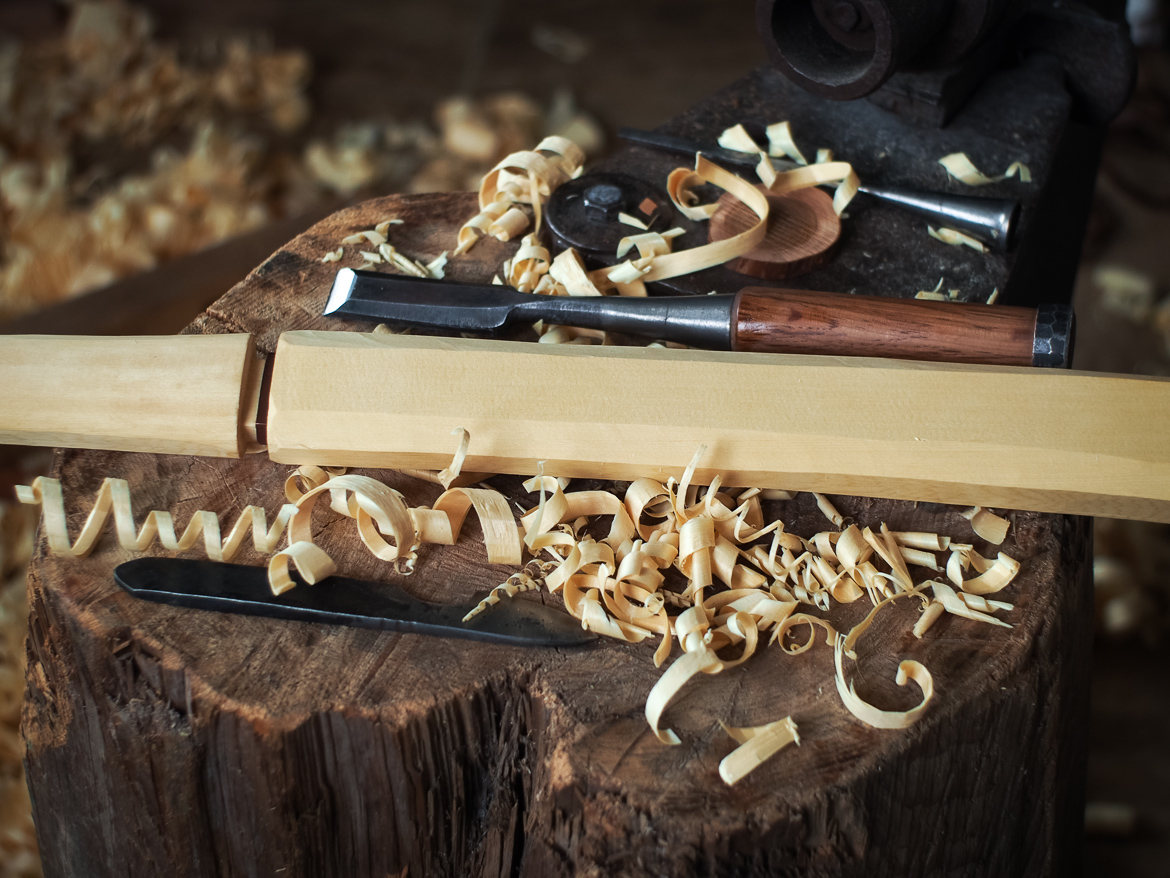
Sounds of the Workshop: Aikuchi Tanto Koshirae
…Sounds of the woodshop, that is…a.k.a.: the quiet edition. Sit back and chill to the sounds of sharp blades and smooth wood. This is a collection of clips documenting the steps and sounds involved at most every stage of the process of hand making a traditional aikuchi tanto mount from reclaimed driftwood. The project began…
-
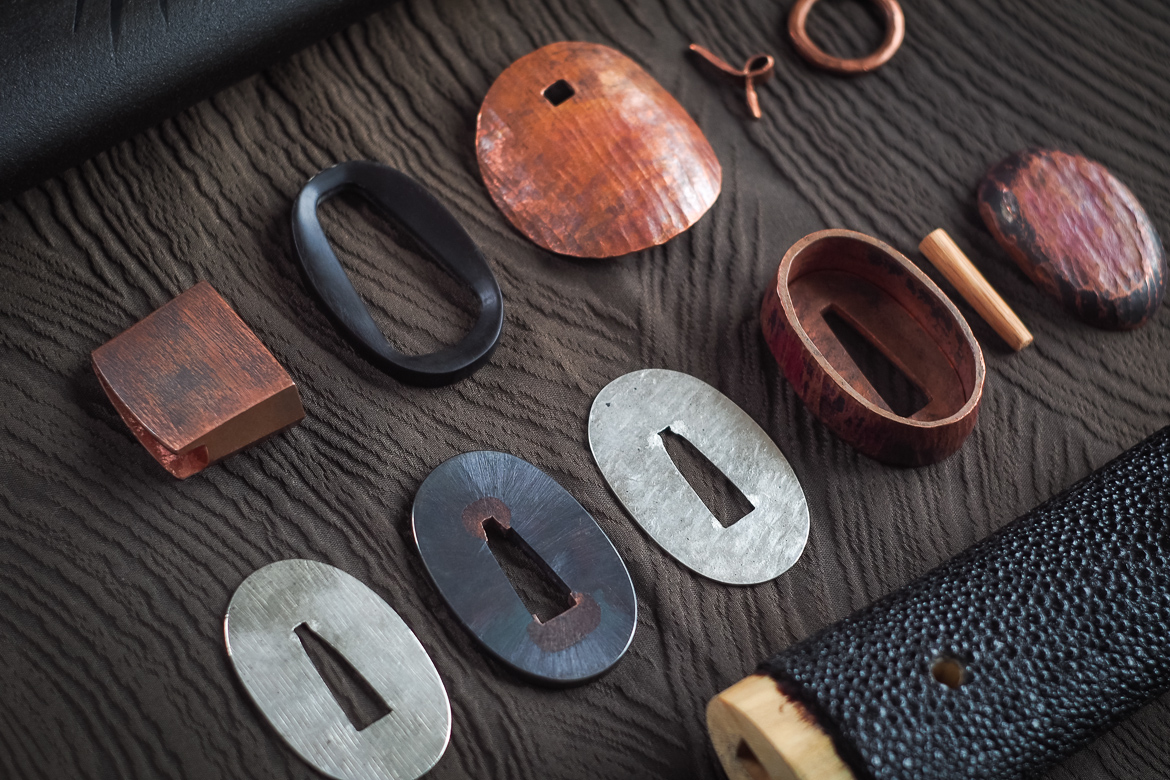
Tsukimi Tanto – Final Assembly
A quick clip of the final assembly of the Tsukimi Tanto. All parts of traditionally constructed tanto and koshirae fit together tightly and the assembly is locked together with a single bamboo peg. Each part fits only one way, even the bamboo peg has a specific alignment for maximum strength. Tsukimi means “moon watching” (in…
-

Tsukimi Tanto
The bright orange moon of late Summer and early Autumn is the inspiration for this work. Tsukimi means moon watching, and brings to mind a lovely harvest moon and the rustling sounds of the dry, frost coloured susuki grass as the evening breeze blows across the plateau. The unusual ring and plate style kurikata is…
-

Sounds of the Workshop: Creating a Tanto Blade
Just for fun! This is a collection of clips documenting the sounds involved at each stage of the process of making a traditional tanto blade from reclaimed steel. A little slower the second time in case you missed anything in the intro! The blade is based on design elements of the 13th century Aizu Shintogo…
-
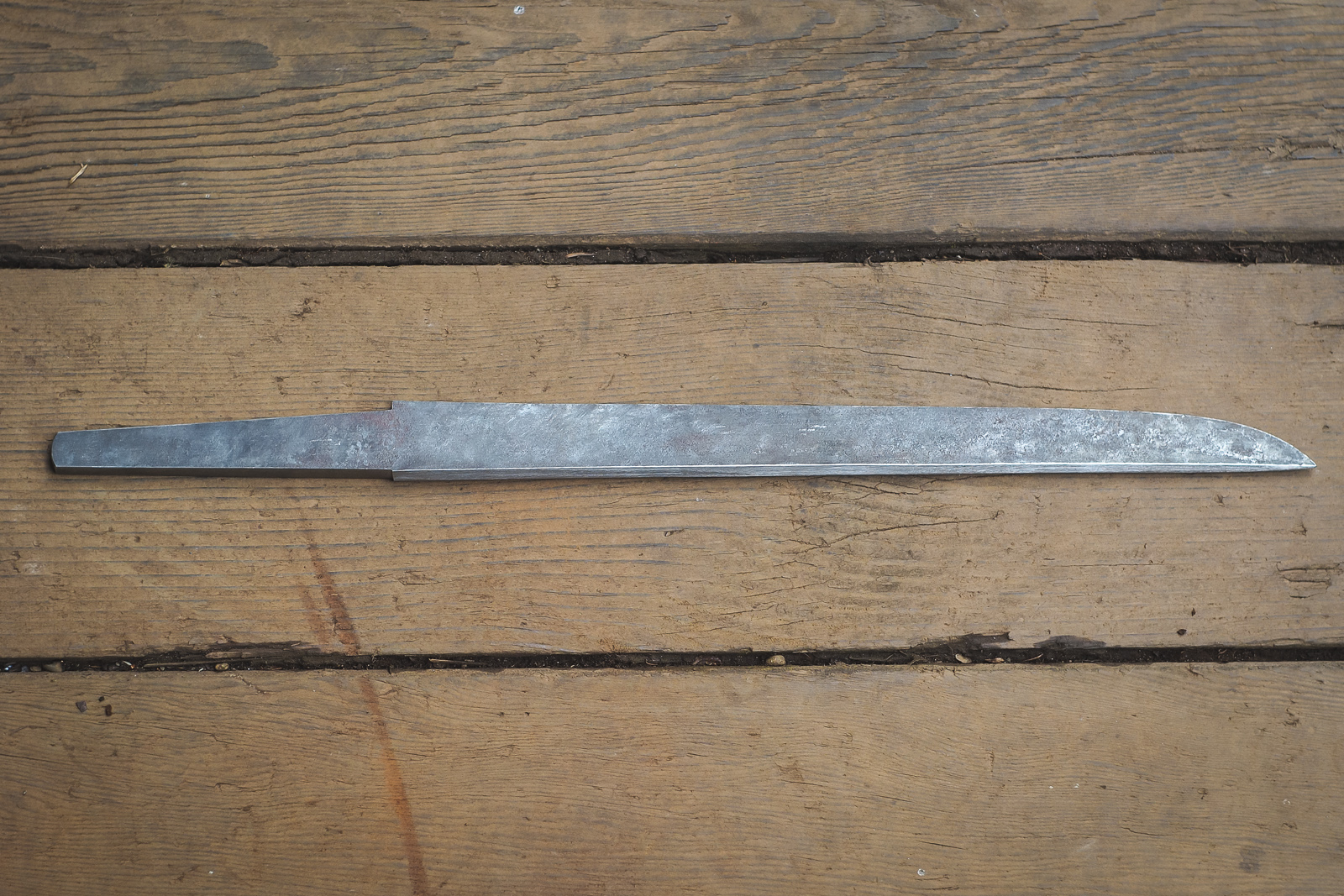
Forging the Ashinoho Tanto
This tanto began as a reclaimed carriage spring and was hand forged in a pine charcoal fire, smoothed with files and a sen scraper, differentially hardened using traditional water quench yaki-ire with clay, and polished by hand with natural Japanese water stones. This tanto was forged from an antique horse-drawn carriage spring in early 2014,…
-
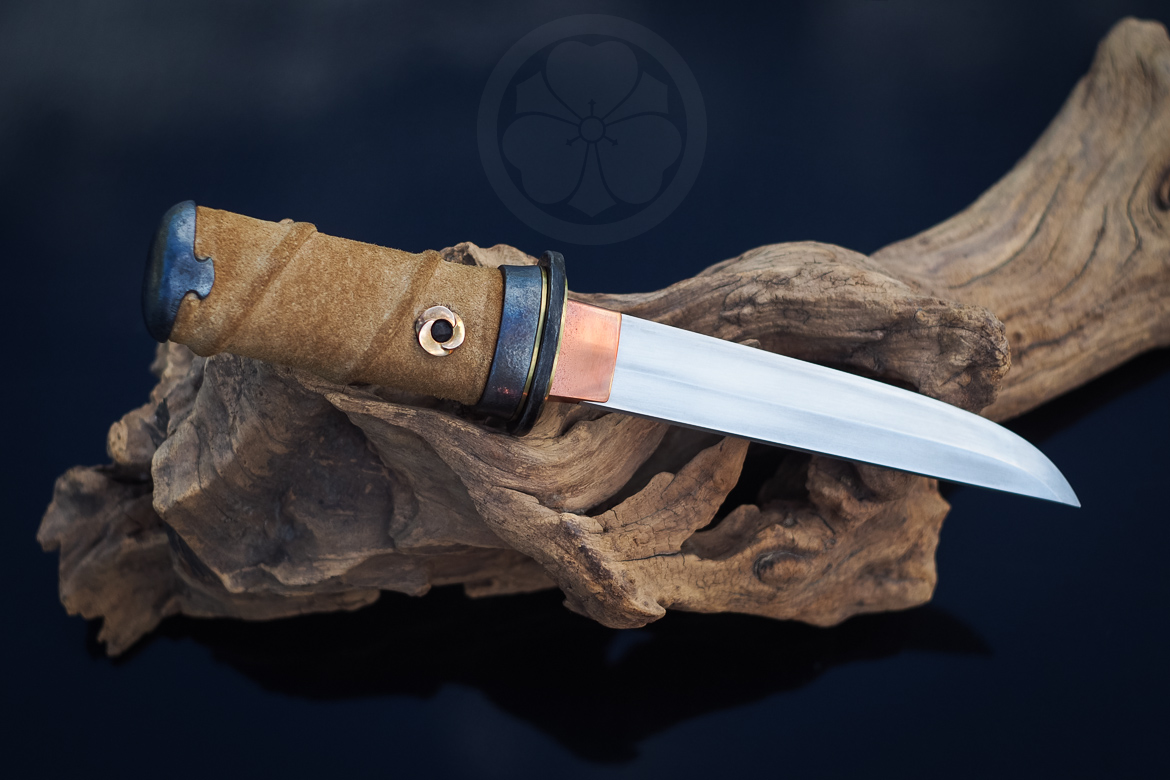
Uzumaki Kotanto
Uzumaki means a spiral or whirlpool shape and refers to both the triple wave whirlpool shape of the bronze accent around the mekugi and the spiraling wrap of the gangi-maki handle. It also alludes to the cyclical nature of the history and journey of usefulness of the many materials reclaimed for its creation. This tanto…
-
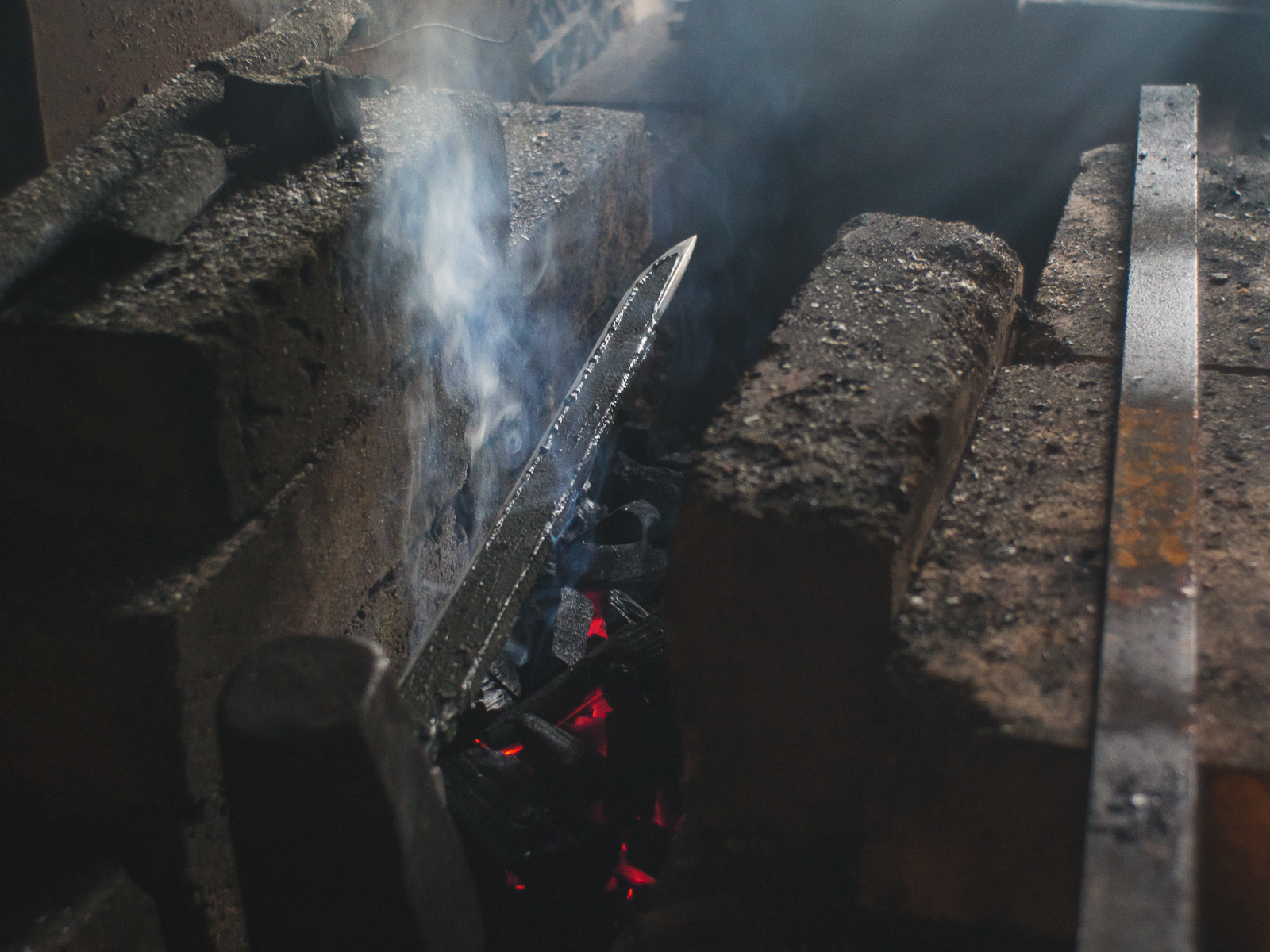
Yaki-Ire – How a Tanto Blade is Born
Until it survives the hardening process, a tanto is only a piece of steel, not yet a blade…read more about this transformational stage: Yaki-Ire (Clay Tempering)
-

Forging a Tanto from a Carriage Leaf Spring
Full Length Version **The heating time has been edited out and some of the tang work is missing due to battery issues. The blade shape is based on the Aizu Shintogo kata: islandblacksmith.ca/2014/04/aizu-shintogo-kunimitsu-tanto-kata/ Making the most of the fire, hammer, and anvil to prepare the steel to be refined and smoothed…read more about this foundational…
-

Sunahama Kotanto
This piece was named for the way the natural spalting design of the saya is reminiscent of an ink painting of waves washing on a sand covered shoreline. It also commemorates the fact that the woods used for the handle and saya are among the most recognizable of the West Coast woods, and the common…
-

Case Study: Making the Sunahama Kotanto
scroll down or jump to the sections below: Blade Sunobe Hizukuri Ara-shiage Hardening Clay Mixture Tsuchioki Yaki-ire Polishing Kaji Togi Shitaji Togi Habaki Forging Filing Bending Soldering Handle Seppa Nakago-ana Sokui Core Tsuka Tsukamaki Mekugi Scabbard Inside Outside Assembly Forging a Kotanto Blade A charcoal fire is used to heat the steel for shaping with…
-
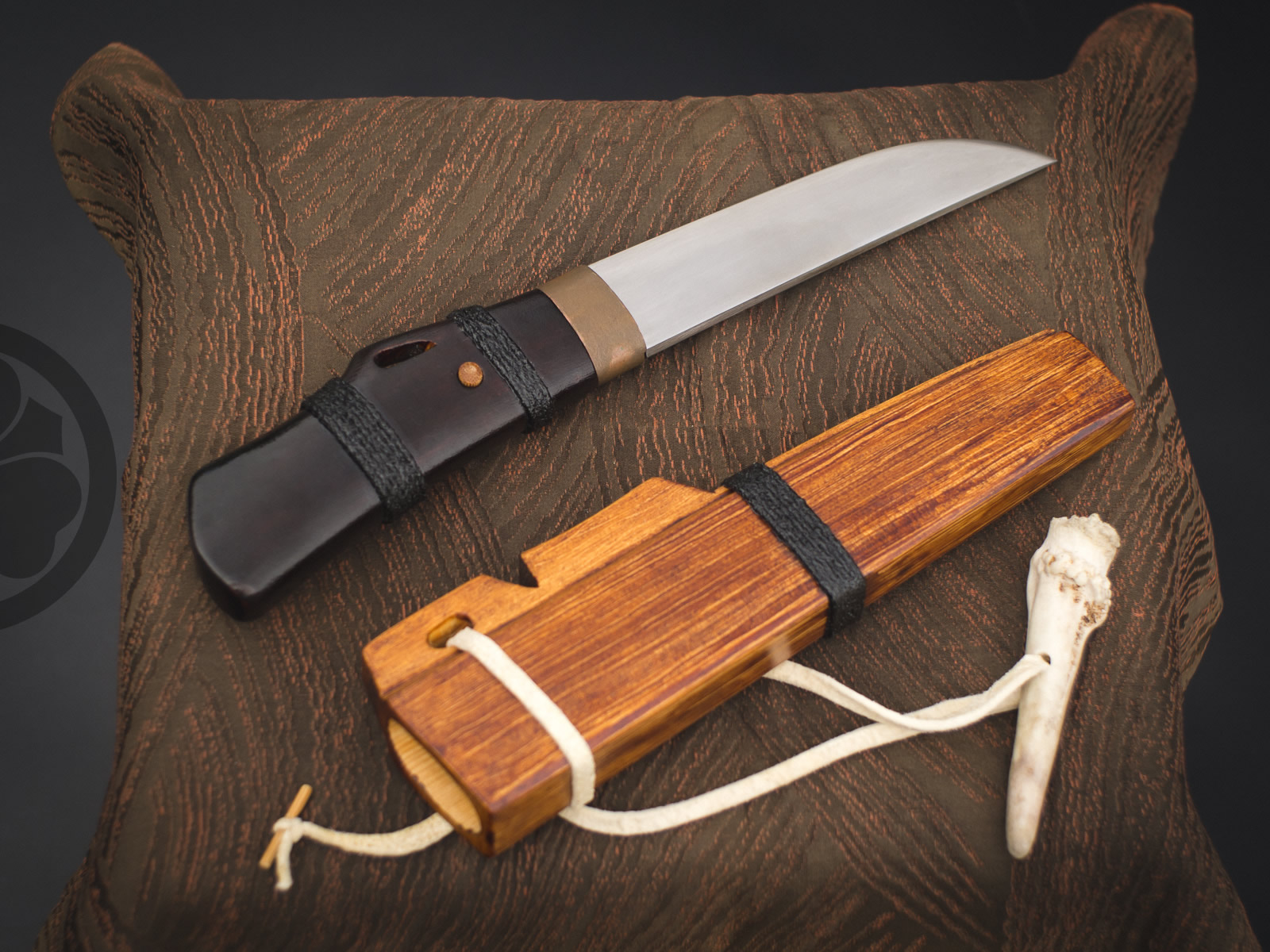
Makiri Style Kotanto
The makiri is one of the traditional knife patterns of the Ainu, an indigenous people of Japan. Makiri are generally mid-sized utility knives and are hung from a belt by a lanyard. They are mounted with wooden handles and scabbards and may be decorated with carvings or incisions, often added by the owner. The most…
-

The Bone Dagger
A piece that was in process for almost a year and a half from the time the blade was forged until the final mounting, this has become an interesting fusion piece and much more technical than originally envisioned as the project developed. Mounted with the same technique as a traditional Japanese sword, the parts of…
